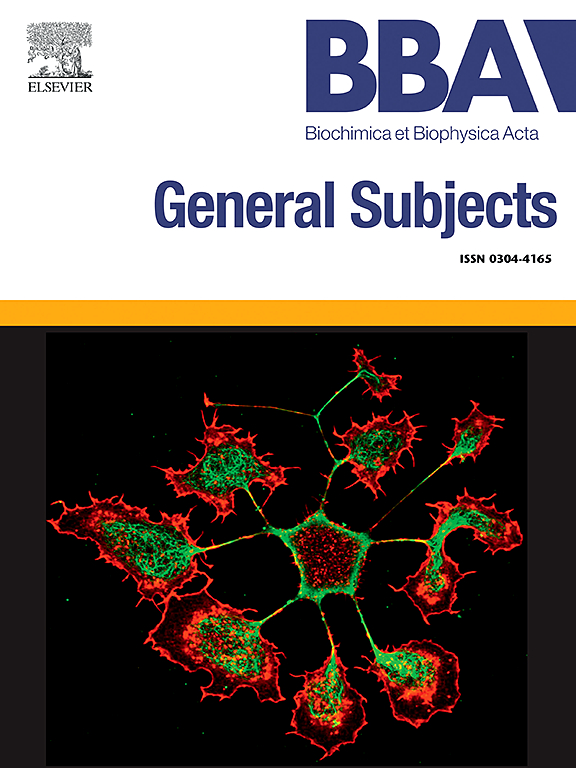平衡RNA加工和先天免疫反应:SMN凝聚体在snRNP生物发生中的可能作用。
IF 2.2
3区 生物学
Q3 BIOCHEMISTRY & MOLECULAR BIOLOGY
Biochimica et biophysica acta. General subjects
Pub Date : 2025-01-16
DOI:10.1016/j.bbagen.2025.130764
引用次数: 0
摘要
u体等生物分子凝聚体是由内在无序区域之间的多价相互作用形成的特化细胞结构。u -小体在细胞质中隔离小核核糖核蛋白复合物(snRNPs),它们在哺乳动物细胞中的形成取决于应激条件。由于u -小体毗邻p -小体,因此被认为是snRNP储存或周转的潜在位点。SMN是snRNP生物发生的伴侣,通过其都铎结构域形成凝聚体。在果蝇模型中,SMN缺陷引发的先天免疫反应类似于在哺乳动物细胞病毒感染期间观察到的过量细胞质snRNA。此外,由SMN缺乏引起的脊髓性肌萎缩(SMA)与炎症有关。因此,SMN可能通过形成u -小体来隔离snRNP分子,从而有助于防止先天免疫因snRNP生物发生缺陷而异常激活。对u体功能的进一步研究可能为RNA代谢相关疾病的治疗提供新的思路。本文章由计算机程序翻译,如有差异,请以英文原文为准。
Balancing RNA processing and innate immune response: Possible roles for SMN condensates in snRNP biogenesis
Biomolecular condensates like U-bodies are specialized cellular structures formed through multivalent interactions among intrinsically disordered regions. U-bodies sequester small nuclear ribonucleoprotein complexes (snRNPs) in the cytoplasm, and their formation in mammalian cells depends on stress conditions. Because of their location adjacent to P-bodies, U-bodies have been considered potential sites for snRNP storage or turnover. SMN, a chaperone for snRNP biogenesis, forms condensates through its Tudor domain. In fly models, defects in SMN trigger innate immune responses similar to those observed with excess cytoplasmic snRNA during viral infection in mammalian cells. Additionally, spinal muscular atrophy (SMA), caused by SMN deficiency, is associated with inflammation. Therefore, SMN may help prevent innate immune aberrant activation due to defective snRNP biogenesis by forming U-bodies to sequester these molecules. Further studies on U-body functions may provide therapeutic insights for diseases related to RNA metabolism.
求助全文
通过发布文献求助,成功后即可免费获取论文全文。
去求助
来源期刊

Biochimica et biophysica acta. General subjects
生物-生化与分子生物学
CiteScore
6.40
自引率
0.00%
发文量
139
审稿时长
30 days
期刊介绍:
BBA General Subjects accepts for submission either original, hypothesis-driven studies or reviews covering subjects in biochemistry and biophysics that are considered to have general interest for a wide audience. Manuscripts with interdisciplinary approaches are especially encouraged.
 求助内容:
求助内容: 应助结果提醒方式:
应助结果提醒方式:


